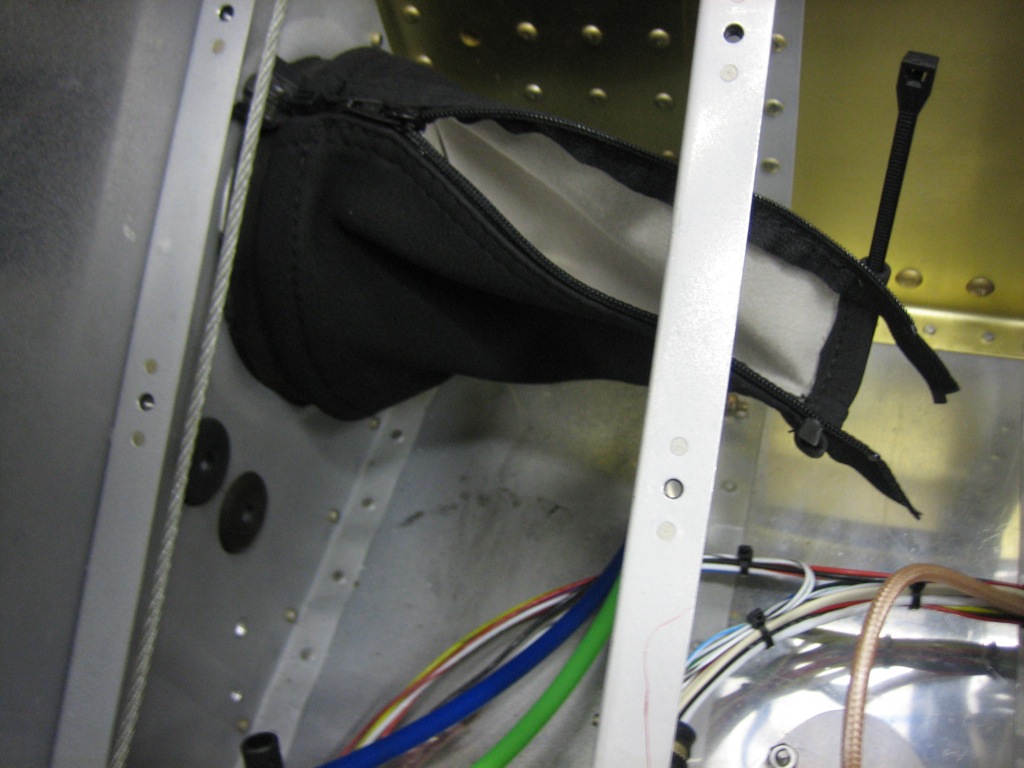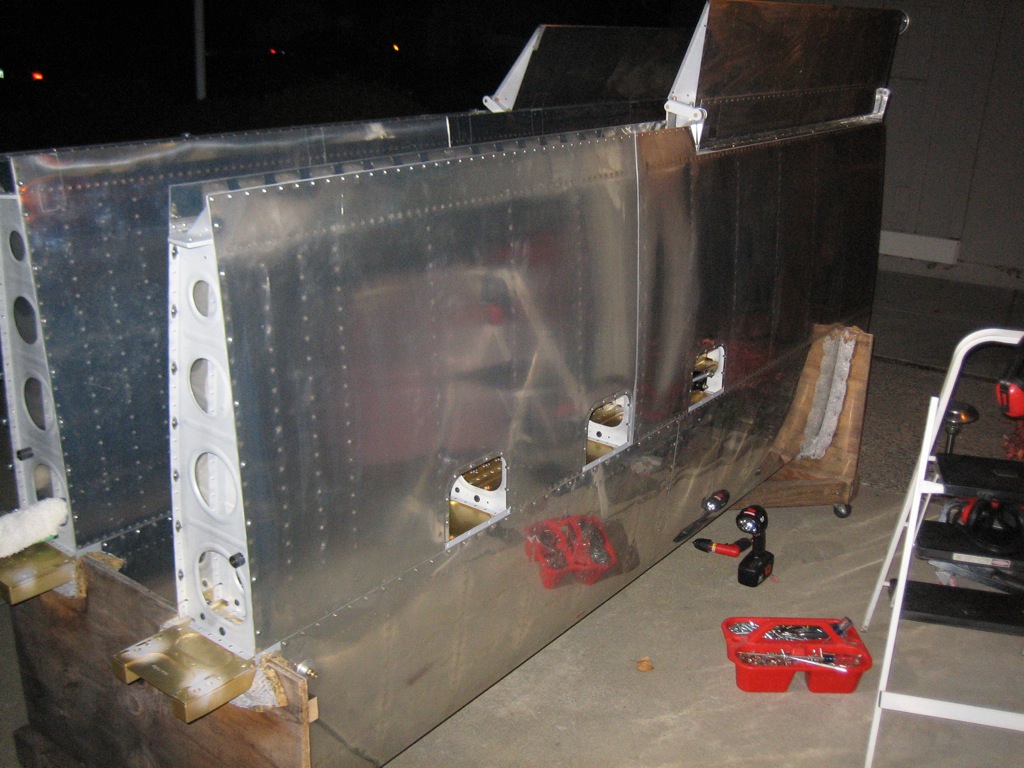I drilled the bottom of the wing for the outside air temperature probe. I installed it in the wing, adjacent to one of the inspection plates (just to the upper left in this picture).

I also cut a small hole in the conduit here so that the OAT probe wires could exit. You can see the 2 conductor molex connector I used here as well. I’m honestly not sure the connector is worth the trouble since it would have to be cut off to remove the probe anyway. It’s probably better to just use a couple of butt splices to crimp the probe wires together with a service loop for future maintenance. With this done, I think I’m done with the wings until they go to the airport.

I needed a little more filler on the front of the rudder.

…as well as the aft side of the vertical stabilizer.

After that cured, I filed and sanded it down to create a uniform 0.150″ gap (the same as the lower gap under the rudder horn).

I also trimmed a little more off the bottom rudder fairing and then removed all of the gel coat around the hole in preparation for bonding a patch. For a non-structural patch like this, removing the gel coat isn’t necessary. I did it more so that the patch would be flush with the gel coat and I wouldn’t have to use as much filler to fair it in.

Finally, I added a patch made of three layers of 8.9oz/yd cloth.

To keep it tight against the fairing, I laid a piece of plastic over the patch and taped it tight. I then taped a piece of scrap aluminum over the patch to ensure it cures totally flat.






























